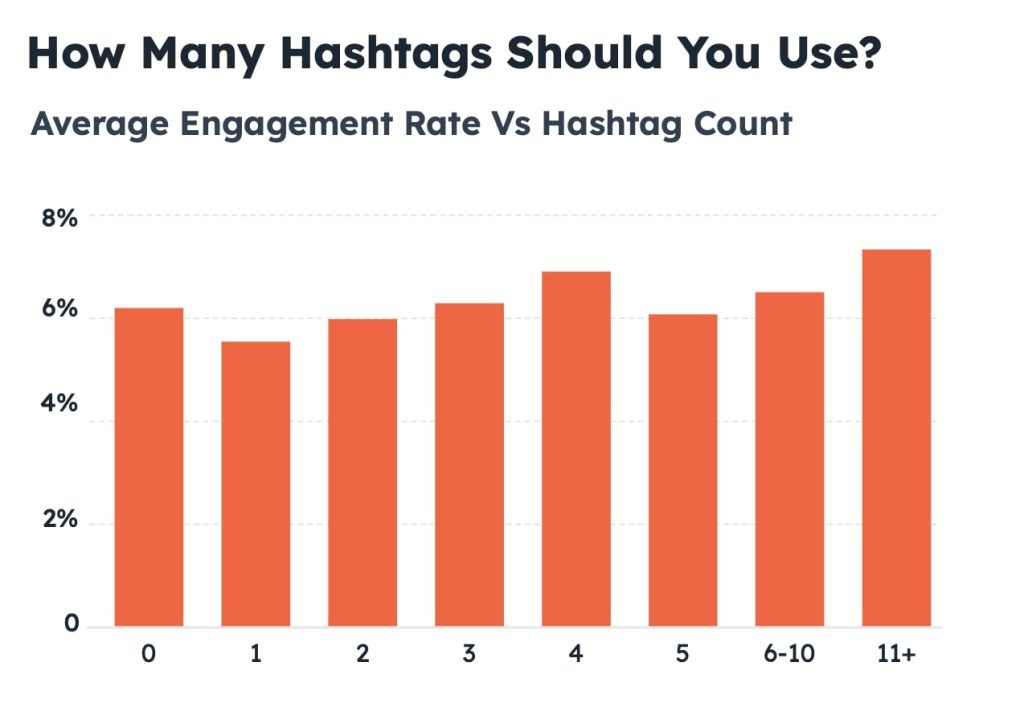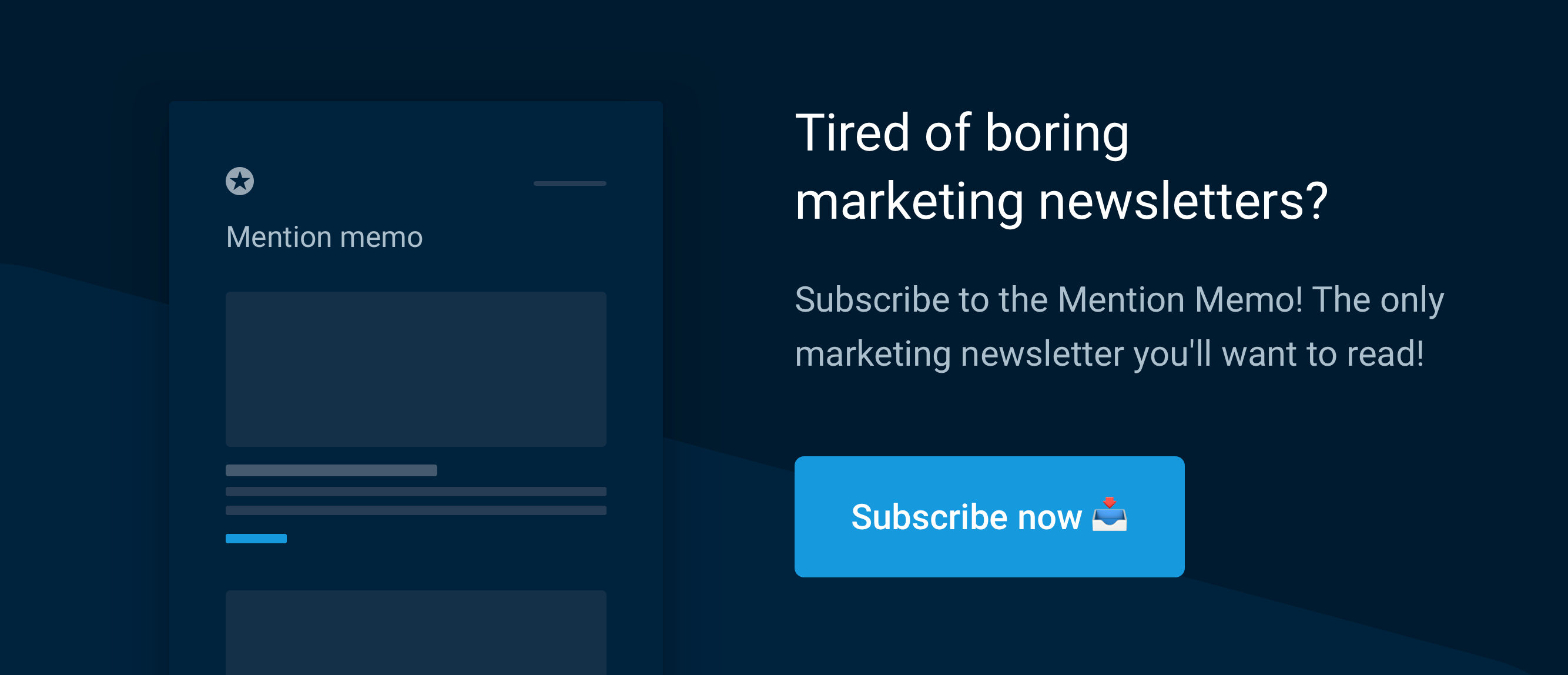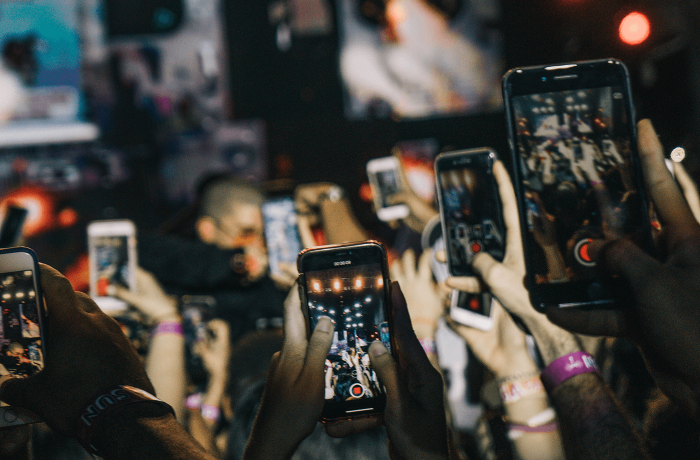Suppose I told you I have proof that Instagram hashtags don’t increase Instagram engagement? Do I have data that actually shows the opposite – that they may cause harm?
Well, I do have this data, and I think you will want to see it.
You may be tempted to stop reading right now. Of course, Instagram hashtags increase engagement! How could they not?
Well, don’t be so sure. We’ve just published a massive Instagram engagement report, and the results are…interesting.
So what’s the deal? How do hashtags work? You’ll have to keep reading to find out…
Table of Contents:
The Common Logic
Every piece of Instagram advice you read tells you to use hashtags on your posts and your Instagram story.
And all the big experts say the same thing:
“Instagram hashtags, and a proper hashtag strategy are still one of the best tools for driving engagement on your posts.” – Benjamin Chacon, Later .
“[Using hashtags] massively expands the reach of your post, gets you decent engagement and even grows your Instagram followers a little” – Natalie Lam, Noisy Little Monkey.
“It’s been proven, a post that includes hashtags gets over 12% more interaction, so it’s no secret that a specific hashtag -or even an industry hashtags- can be an easy way to boost your engagement. ” – Christina Nicholson, Huffington Post .
It all makes sense. Popular Instagram hashtags make your posts easier to find. And the more people find and view your hashtags, the higher the likelihood that you’ll receive likes, comments and increased traffic on your Instagram post.
Our Instagram report analyzed over 37 million Instagram posts. And it uncovered a startling revelation.
The Bombshell
Check out this graph:

Instagram posts with 11 hashtags or more see the highest average engagement rate, followed closely by posts that feature 4 hashtags.
This is very surprising because last year, it was posted with 1 hashtag that had the highest engagement, and as the hashtags increased, the engagement rate dropped! So, what changed?
The Hypotheses
Of course, we don’t think it’s as simple as “hashtags increase or decrease engagement.” It’s the use of relevant hashtags that make all the difference.
So what could be causing this trend? Here are a few possibilities.
1. Instagram Penalizes Spammy Hashtags
Instagram runs a tight ship compared to other social media platforms like Twitter or Snapchat, where almost anything goes. It has a clear set of community guidelines banning nudity and other offensive content.
But it also has a (really) long list of banned hashtags , both permanent and temporary – that is composed of more than 60,000 hashtags!
And they’re not all obvious. Sure, some are obviously scandalous, but others seem pretty harmless.
A few examples of hashtags that have been banned:
- #always
- #alone
- #adulting
These have all been temporarily banned at one time or another. And those are just the ones starting with “A!”
Word is, they’ve banned more than 60,000 tags. And the list is ever-changing.
The Effect of Using Banned Hashtags
If you include one of these in your posts, it won’t appear in other people’s feeds. You’ll also have a hard time getting engagements on a post composed of a banned hashtag that other people can’t see.
2. Famous People Don’t Need Hashtags
Our study includes plenty of huge names, and their posts naturally get a lot of engagement.
It’s probably safe to assume that they use fewer hashtags on average too, since they’re not fishing for views or engagements like the rest of us.
For example, the most liked in our study (and also the most liked of all time) is this one:
Beyoncé doesn’t need hashtags.
In fact, none of the 10 most popular posts in our study contains a hashtag . So it’s possible that our averages are skewed as a result.
So, maybe these posts are popular because they don’t contain hashtags. But more likely, they’re popular despite not having hashtags.
3. You’re Probably Using Too Many Hashtags
This is the flip side of the hypothesis above. The users most addicted to hashtags are probably those with few followers who want the Instagram algorithm to notice them. They’re looking to quickly add followers and engagement, and hashtags are an easy way.
That Instagram user probably also posts tired content without using the right hashtag, opting for popular hashtags that don’t make sense with their post. As the owner of a flailing Instagram account myself, I don’t judge.
When these posts only get a smattering of engagements, the average is brought down.

4. We’re All Using The Same Hashtag
I don’t want to go so far as to say that hashtags are dead.
However, it makes sense that the most popular hashtags on Instagram don’t help people find your post.
For instance, the most popular Instagram hashtag is “#love.” It appears more than 2.1 billion times – yes, that’s a billion with a B. Considering that 1.3 billion pictures are uploaded daily, you have a very small chance of being at the top of this hashtag’s page.
Takeaway
Despite all those possible excuses I just offered, one thing is pretty clear: just using hashtags doesn’t increase engagement. If you want more likes and comments, you need to think a little more creatively.
1. Use Better Hashtags
Our data shows that hashtags on their own aren’t a sure thing. And your friend who posts those 30 identical tags for every post is not on a winning strategy.
Instagram actually suggests you only use 5 hashtags per post. So, with that in mind, and according to our latest Instagram Engagement Report, you should probably start using four of the best hashtags you can think of.
Remember, users can still follow their favorite hashtags, which means that your posts could appear in the feeds of users who don’t follow you—which is gold!
But only a crazy person would follow #love or one of the other massively popular hashtags. It would make their feed completely unusable.
Instead, users will look for niche hashtags that speak directly to them. If you can identify and use a niche hashtag wisely, your content will become much easier to find, and engagement will almost certainly increase.
If you’re looking for an easy way to generate relevant Instagram hashtags, our free Instagram Hashtag Generator tool is a great place to start.
2. Stay Away From Banned Tags
This should be obvious. Not only will banned hashtags make your content impossible to find, Instagram will “shadowban” people who overused them.
[Shadowban = your account is blocked for everyone else, but you don’t know about it!]
3. Change Up Your Hashtags
Another fast track to getting yourself shadowbanned is to simply copy/paste the same list of hashtags into every post. That friend with the 30 tags? That’s a game plan that probably won’t work for long.
The Instagram overlords are too smart for this, sorry.
A far better move is to actually use relevant hashtags that relate to your photos. Imagine that! It’s sort of what they were designed for in the first place.
One simple way to do this is to look at other brands in your niche. Can you emulate what’s working for them?
Look for other companies getting good results, and see which hashtags work for them. As long as they’re relevant to your posts, you should start to see improvement.
Conclusion
With everything that was said above in this article, it’s important to remember that hashtags aren’t going anywhere in 2023. In fact, they’re back in full force.
What you have to remember is a few well-selected, branded hashtags or related hashtags can get you far.
Also, the content you put out there will make people follow your account, so make sure your posts add value and interest your target audience.
It’s the content – not the hashtag – that really makes a difference. To pair with the great hashtags you’ll use, check out our best captions for Instagram article!






